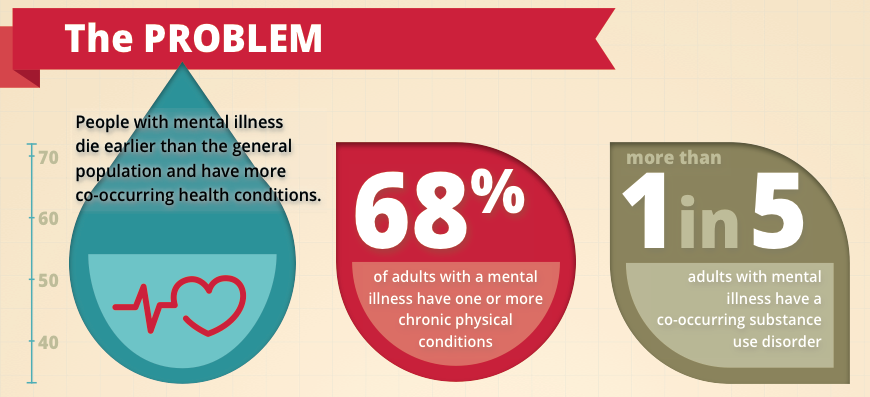Workplace wellness has expanded to become more than simply offering employees gym memberships and nutrition trips. Moreover, wellness has come to encompass not only physical, and financial, but mental health as well. Investing in employees as a whole provides long term benefits and helps to promote a culture of caring in the workplace. According to research conducted by Harvard Business Review, “Employees who felt they worked in a loving, caring culture reported higher levels of satisfaction and teamwork. They showed up to work more often.” This has obvious positive links to increased productivity.
Mental Health in the Workplace
Mental health and work-related stress are important factors to consider in the strategic planning of health and wellness program design and execution. “The relationship between stress and mental illness is complex, but certainly stress can exacerbate mental illness for some people. In fact, according to Statistics Canada, employees who considered most of their days to be quite a bit or extremely stressful were over 3 times more likely to suffer a major depressive episode, compared with those who reported low levels of general stress.”
From an economic standpoint, mental health and related costs are significant to the employer. “Costs associated with mental illness (in terms of absenteeism, productivity, indemnities and healthcare) were estimated at $51 billion in Canada in 2003 (Lim et al., 2008).”

Mental Health and Diabetes
A number of research studies have been done on the comorbidity of diabetes and depression. “Several factors, including sedentary lifestyle, obesity, and an aging population, contribute to epidemic rates of type 2 diabetes mellitus. Depression frequently occurs comorbidly with diabetes although it is unrecognized and untreated in approximately two thirds of patients with both conditions.”
One study finds that the “course of depression in patients with both diabetes and depression is chronic and severe.” Patients with both diabetes and depression have severely worse outcomes, “Up to 80% of patients with diabetes and depression will experience a relapse of depressive symptoms over a 5-year period. Depression is associated with nonadherence to diabetes self-care–including following dietary restrictions, medication compliance, and blood glucose monitoring–resulting in worse overall clinical outcomes.”
Moreover, research from the University of Massachusetts Medical School reveals “The comorbidity of type 2 diabetes mellitus (T2DM) and depression is associated with poor glycemic control.”
Physical activity is a key component to managing these diseases. “Exercise has been shown to improve mood and glycemic control, but individuals with comorbid T2DM and depression are disproportionately sedentary compared to the general population and report more difficulty with exercise.”
Predicting Risk in Individuals
Knowing the risk of disease and depression in individuals is the first step in helping to prevent and manage these conditions. With our proprietary algorithms, an individual’s current risk for depression and Type 2 Diabetes can be determined. Using our What’sMyRisk toolkit, employers, caregivers and individuals are able to determine exactly how this risk is decreased with increased activity, thus providing an easy method for goal-setting and exercise prescription, and overall assessment of the efficacy of employer sponsored health and wellness initiatives.






